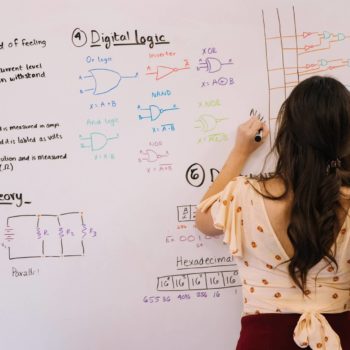 School is starting back up and for many students this might be the first year that they are introduced to STEM (science, technology, engineering, and math). Whether it’s with a formal STEM enrichment class or incorporated into regular classes in a less formal way, learning STEM in a hands-on manner instills lifelong skills. (For the purposes of this article we are going to be referring to the engineering portion of STEM.)
School is starting back up and for many students this might be the first year that they are introduced to STEM (science, technology, engineering, and math). Whether it’s with a formal STEM enrichment class or incorporated into regular classes in a less formal way, learning STEM in a hands-on manner instills lifelong skills. (For the purposes of this article we are going to be referring to the engineering portion of STEM.)
As a parent this could also be your first year supporting your student with STEM coursework, and while it can seem intimidating at first, below we share a few ways you can help encourage your student to push through those early challenges in their STEM education journey.
Encourage
Encouragement at home is a huge confidence booster as kids learn the basics of physics or advanced math. You might not have all the answers for your student, but by showing that you are there and willing to learn alongside them provides the security that they need to push forward and learn more challenging material.
Ask Questions
The best way to learn, is to teach. If you see your student going over material and concepts that are also new to you, ask questions. Get in there and have them explain concepts and show you how to solve problems. The more they explain what they are doing, the more they are retaining the information.
Don’t be afraid to ask the hard questions that require a bit more research or brain power too, a little push can be a good thing. In the end, you might also find yourself with a new appreciation for engineering.
Practice STEM Concepts Outside of the Classroom
Search out other opportunities for your student to put their newfound love of engineering to use—whether it’s a robotics camp, advanced LEGO sets, a coding program, or another type of hands-on learning. These activities help build upon their skills learned at school. Continue to show your student that the skills learned in the classroom, translate out of the classroom as well.
Also, if your student is particularly interested in a STEM job field, search your network and see if you know anyone in that field willing to talk to your child about what they do. Most children don’t think of pursuing a career if they have never met anyone in that field.
Real World Example: Cassidy Crowley, Inventor of The Baby Toon
We had the opportunity to work with Cassidy Crowley, inventor of The Baby Toon. The Crowley family came to us with the idea for The Baby Toon. Their daughter, Cassidy (age 7), had come up with the idea and the design for the Honolulu District Science and Engineering Fair.
From Cassidy: “I was instructed to identify a problem. When I went home, I noticed that my mom always got scared when my baby sister put the back of a long, hard, plastic spoon in her mouth. I didn’t want anything to happen to her and I didn’t like seeing my mom so worried, so I came up with… The Baby Toon!”
We worked with the Crowley family on finding the optimal design for The Baby Toon, we used 3D printing to test prototypes and worked with their manufacturing partner on the molding. The Baby Toon also holds a patent, in which we were able to assist as well. Since working with them, Cassidy has gone on to secure a deal on Shark Tank and license her Baby Toon invention to Munchkin.
As you embark on this new school year, remember that STEM education is a journey and that students don’t need a formal engineering degree to make a positive impact on the world around us.
Additional Posts Related to STEM education:
- Learning to Think Like an Engineer
- Encourage Your Young Inventor
- We Need to be Teaching Entrepreneurship to Students
_____
3D Innovations is a Product Development Company – from the 3D Design to a fully functional 3D Prototype & Product.
Subscribe to the 3D Innovations newsletter on our Facebook page!

